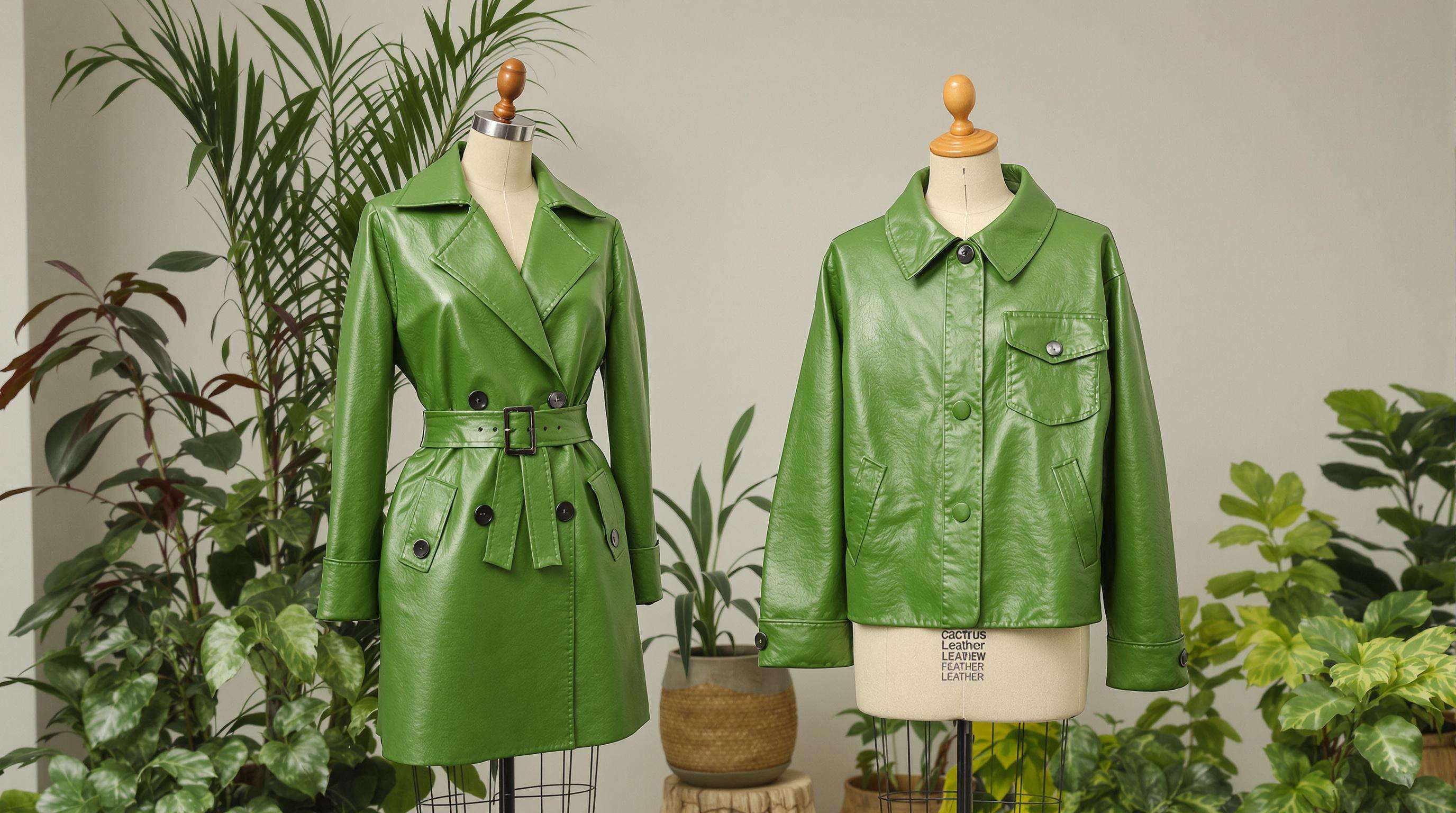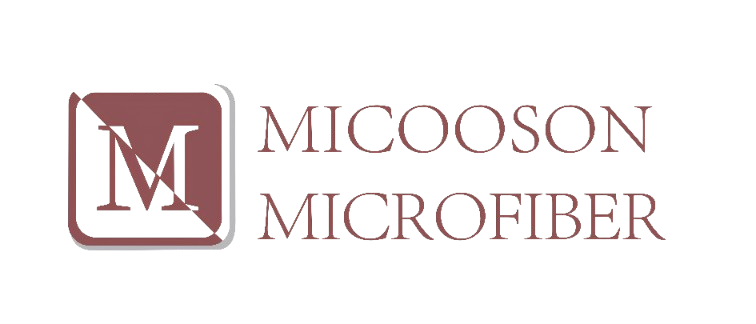I'm so fascinated! How does artificial leather enable the creation of avant - garde fashion pieces?
The Evolution of Artificial Leather in Avant-Garde Fashion
Defining artificial leather and its transformation in high fashion
Artificial leather, which is basically a man made replacement for real animal skin, used to be seen just as cheap copycat stuff in high end fashion circles. The early versions made from petroleum products simply didn't last long enough or feel right under fingertips for those fancy designer brands. But things changed quite a bit over the two decades starting around 2000 when new materials science breakthroughs happened. Today's versions can actually perform almost as well mechanically as real leather, hitting about 92 percent of authentic leather's capabilities according to some recent research published by a major fashion school last year. What this means practically is that fake leather has gone from being something people only turned to when they couldn't get real leather to becoming a core part of many collections these days. Designers no longer have to worry so much about where their materials come from ethically, yet still manage to hit those tough quality benchmarks demanded by customers who want both style and substance.
From rebellion to revolution: How avant-garde designers embrace artificial leather
Back in the 80s, fake leather was all about rebelling against norms - think punk rockers wearing it like armor and those wild vinyl corsets that looked half destroyed on purpose. Fast forward to now, and cutting edge designers see it as their canvas for making political statements. What makes this material so special? It bends and shapes itself into crazy forms nobody thought possible before. We're talking about bustiers molded with heat, skirts that seem to float against gravity, and body shapes that defy normal geometry. According to an article from Synthetic Textiles Journal last year, fashion folks cut down on wasted prototypes by around three quarters when they work with synthetics instead of real stuff. That means faster progress without compromising ethics. This has actually birthed new trends like techno goth, where these fancy faux leathers infused with tiny bubbles glow like ghosts under certain lights, blending art with tech experiments in ways that would have seemed impossible just a decade ago.
Merging sustainability with radical design aesthetics

The idea that going green somehow restricts creative possibilities has been thoroughly debunked by bio-engineered leathers. Materials made from mycelium actually take up organic dyes much better than traditional chrome-tanned leather, which means we can get really striking colors without any toxic chemicals involved. Think about those brilliant acid-green trench coats that look amazing but don't harm the environment. And then there's cactus leather, which naturally resists water so well it's perfect for making coats that can handle unexpected rain showers. According to lifecycle studies, all these alternative materials create about 60 percent less carbon emissions compared to regular cowhide. Fashion designers who are pushing boundaries today insist that taking care of our planet isn't just important, it's at the heart of what makes true innovation possible. They often reference this powerful line from their manifestos: "Radical beauty cannot bloom on poisoned soil." What used to be seen as fake leather is now leading the charge in fashion design while still being kind to Mother Earth.
Innovations in Artificial Leather Materials and Sustainable Production
Artificial leather has come a long way in recent years, combining scientific innovation with eco-friendly goals. Back in the day, most PU versions were made from petroleum products, but nowadays manufacturers are getting creative with plant-based materials instead. Some companies actually ferment plant oils and even repurpose stuff like apple peels to create their synthetic leather, which cuts down on water consumption by almost 90% when compared to traditional cowhide according to Material Innovation Initiative research from last year. The newer bio-fabricated options are taking off big time in avant-garde fashion circles because they can break down naturally within about six months, while regular PU takes centuries to decompose properly. Fashion designers love working with these materials since they allow for unique creations like laser etched mycelium fabrics that maintain complex shapes without needing any stitches at all. However there's growing skepticism about marketing claims around sustainability, so organizations like the Sustainable Leather Forum are trying to establish proper standards for evaluating environmental impact across the entire production cycle before mid next year.
Bio-Fabricated Leather: The Future of Eco-Conscious Avant-Garde Design
Mushroom leather (Myloâ„¢) and its breakthrough in luxury fashion
Mycelium-based materials like Mylo™ reduce carbon emissions by 73% compared to animal leather (Material Innovation Initiative 2025). Luxury brands use it for handbags and sculptural outerwear, cutting water use by half. Its natural elasticity allows for lined-free jacket construction—a technical milestone unattainable with traditional hides.
Mirumâ„¢: Plastic-free, zero-water artificial leather innovation
Mirumâ„¢ uses FSC-certified rubber and agricultural waste in a petrochemical-free process. Its 12-hour production cycle is 90% faster than chrome tanning, accelerating prototyping for geometric footwear. Independent tests confirm full compostability within 180 days under industrial conditions (Sustainable Apparel Coalition 2024).
Next-gen sources: Algae, pineapple, and cactus-based leather alternatives
Emerging bio-materials address durability through hybrid fabrication:
| Material | Tensile Strength | Water Resistance | Production Scalability |
|---|---|---|---|
| Algae leather | 38 MPa | 72 hours | Pilot stage |
| Cactus leather | 29 MPa | 48 hours | Commercial rollout |
| Pineapple leaf | 24 MPa | 24 hours | Limited batch |
Algae-based upholstery, now tested by automotive leaders, can actively absorb CO₂ during use.
Scaling challenges: Bridging lab innovation and industrial demand
Despite a 94% reduction in ecosystem toxicity versus PVC (Ellen MacArthur Foundation 2025), bio-fabricated leather meets less than 3% of luxury fashion’s demand. Biotech-textile partnerships aim for price parity with premium animal leather by 2027 via automated mycelium cultivation.
Design Freedom: How Artificial Leather Fuels Avant-Garde Creativity

Material malleability and sculptural possibilities in fashion design
Artificial leather enables silhouettes unachievable with rigid natural hides. Through thermoforming and advanced bonding, designers craft architectural gowns, volumetric drapery, and wearable sculptures that retain shape and comfort. Bio-based variants are 33% lighter than traditional leather, enhancing wearability without sacrificing structural boldness.
Pushing boundaries with color, texture, and finish innovation
Free from natural limitations, artificial leather offers full creative control. Designers employ nano-coated metallic finishes, 3D-printed scale patterns, and photochromic pigments that shift color in light. These effects deliver consistent, ethical results—supporting collections that explore digital-physical fusion and futurist narratives.
Case Study: A pioneer's use of mushroom leather in visionary collections
One of the top names in luxury fashion recently featured Mylo™ throughout several collections, turning this mushroom-based material into striking trench coats and intricately shaped bustiers. The fabric's unique way of draping naturally and taking dyes so well allowed designers to create these bold, colorful pieces that still fit right in with the house's green values. What makes this really interesting is how this lab-made leather holds up against high fashion expectations without all the environmental baggage of traditional tanning methods. We're talking thousands of gallons of water saved and fewer harmful emissions released during production. For an industry often criticized for its environmental impact, this represents something pretty groundbreaking in terms of what sustainable materials can actually achieve on runways around the world.
FAQ: Exploring Artificial Leather in Fashion
What is artificial leather?
Artificial leather is a man-made material designed to replicate the look and feel of animal leather without using animal products.
How has artificial leather changed in terms of quality and performance?
Over the past two decades, advancements in materials science have significantly improved the mechanical performance and tactile quality of artificial leather, making it a viable option for high-end fashion.
Why do avant-garde designers prefer using artificial leather?
Avant-garde designers favor artificial leather for its malleability, sustainability, and ethical production, allowing them to create innovative shapes and make bold fashion statements.
How does artificial leather contribute to sustainability?
Sustainable artificial leather options like mycelium, cactus, and algae-based materials reduce carbon emissions and water usage compared to traditional leather, while offering biodegradable and environmentally friendly alternatives.
What are some examples of innovative artificial leather materials?
Next-generation artificial leather materials include Mylo™ (mushroom leather), Mirum™ (a plastic-free alternative), and options derived from cactus and pineapple, each offering unique properties for fashion applications.

 EN
EN







